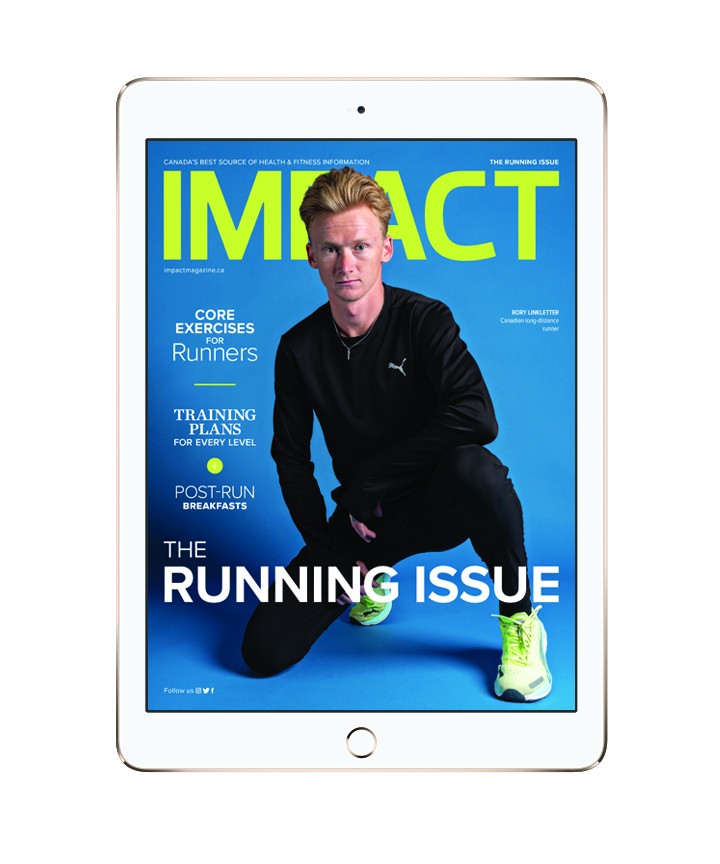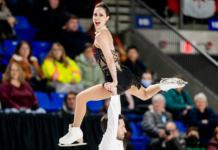
What’s more impressive than filling a running résumé with 50 marathons and five ultramarathons?
What’s more impressive than posting personal-best times by the age of 48?
What’s more impressive than progressing without the aid of coaches?
Answer: Jodi Moore ticking those boxes while coping with autism, attention-deficit/hyperactivity disorder, dyspraxia, and sensory processing differences. The diagnoses were made only eight years ago, but she’s been dealing with these conditions all her life—and still banking countless miles.
“I have often wondered if I didn’t have all this, would I be a faster and stronger runner?” says Moore. “But if I was typical and able to do the things that everybody else does, I might not need running
for what it does for me. I don’t think I would be in very good health right now if I wasn’t a runner. It’s my way of dealing with stress.
It’s my anti-depressant.”
When in need of mood-boosting, however, she isn’t someone who can just tug on a pair of tights and dart out the front door. Coordination complications, including the inability to stand on one foot for more than a couple of seconds, prevent the Calgary resident from tackling technical trails or braving icy conditions.
Nearly blind in her left eye, visual impairment creates anxiety, and sensory sensitivity means that sudden noises, like a cyclist’s bell on a pathway, can drop her on the spot. Bright light—during a sunny day or, worse, from the glare of snow on the ground—stops her from stepping outside.
Indoor workouts aren’t easy, either, and as much as she’d like to address her low muscle tone, strength training triggers migraine headaches. But, despite daily hurdles, she’s never considered abandoning the sport. Determined to maintain fitness, she punishes her basement treadmill: over the years she’s burned out three of the contraptions. By striding inside or on byways, she manages to thump out 110 weekly kilometres.
Moore refuses to imagine a life without running.
“No matter how much I’m pushing myself, it’s relaxing,” says the 49-year-old, wearing dark glasses during an evening conversation in her living room. “It’s a way of grounding myself: just me and the road. It’s probably the closest I can come to having some kind of rhythm. It is kind of soothing.”
Moore, who graduated with a Bachelor of Arts in psychology from Athabasca University a year ago with plans to pursue her master’s degree, says lacing up her sneakers as a child and nowadays, is linked to self-worth.
Don’t limit yourself. Don’t let anybody tell you that you can’t do something. Switch off the part of your brain that says, ‘I can’t do it,’ and keep on going.
“I started running as therapy to prove to myself that I could do this and I wasn’t a complete waste of space like everyone thought I was,” says Moore, who finished the 2021 New York City Marathon in 3:28:05—her best-ever time. “I don’t have a hero. I don’t have a running mentor. I just said to myself that I was going to do this.”
And despite a kitchen table nearly buckling under the weight of well-earned medals and trophies, she’s not finished. Moore has knocked off five of the six World Marathon Majors—Tokyo remains on her to-do list. The idea of clocking sub-four-hour marathons in all 50 of the U.S. states appeals to her. “Don’t limit yourself. Don’t let anybody tell you that you can’t do something,” she says. “Switch off the part of your brain that says, ‘I can’t do it,’ and keep on going.”
Growing up in Vancouver, running was the one thing she could count on. As a little girl with few friends, she would trot around the schoolyard to kill time during the lunch break. The slowest member of the Grade 5 track team, she discovered that the farther she ran the more she enjoyed it. She remembers breezing through a local 10 km. “I wasn’t even tired,” recalls Moore. “It was like, ‘I can keep going.’”
For her birthday, she got a card referring to her as a “marathon runner.” Well-meaning, but inaccurate. So she decided to earn
that title.
With the odds stacked against her—self-trained and undernourished (“borderline anorexic”) and wearing tattered shoes—the 13-year-old winced through all 42.2 kilometres of the 1987 Vancouver Marathon. “Everything hurt,” she says. “It hurt for a week to walk. I’d be at school climbing the stairs and I’d be, ‘Ow, ow, ow.’”
But diminish her appetite for the sport? Hardly. “Oh, I wanted more.” A year later, she bagged another marathon.
Running was becoming everything in Moore’s world. It served as an “escape” from a less-than-loving home life. “I didn’t get along with (my guardians) and they didn’t think too much of me.” And running was something she could do well. For a troubled kid, something like that resonates. Still does, in fact.
“I had a hard time with a lot of school stuff. I wasn’t smart, I wasn’t popular, I wasn’t good at anything. I was always the last one picked for sports. But I could run marathons,” says Moore. “When you’re good at a lot of things, then one thing might not have much significance for you. But when running is one of the very few things you’re actually capable of doing?”
She laughs. “Then it’s all about the running.”
Photo by Trudie Lee

Read This Story in Our 2023 Running Issue
Featuring Rory Linkletter, Canadian long-distance runner. Add to your bucket list with the top Destination Marathons Around the World. Train for 10 km right up to a marathon – plus a 70.3 program. Increase your strength and work your core with Canada’s Top Fitness Trainers. Enjoy plant-based, post-run breakfasts and so much more.















